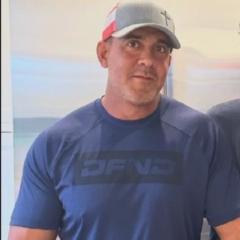Activity
Mon
Wed
Fri
Sun
Jan
Feb
Mar
Apr
May
Jun
Jul
Aug
Sep
Oct
Nov
Dec
What is this?
Less
More
Memberships
Castore: Built to Adapt
533 members • Free
24 contributions to Castore: Built to Adapt
The Klotho Paradox: When the Quest for Youth Creates More Entropy
Every so often, a new compound captures attention in the performance and longevity world, quickly becoming the latest “miracle molecule.” The pattern is familiar: a surge of online excitement, a handful of posts that sound technical enough to impress, and bold claims that oversimplify complex biology. Recently, that spotlight has turned to Klotho. It’s being discussed as a potential key to longevity something you can “activate” or “boost” to turn back cellular time. But beneath the hype, much of the conversation misses the beauty of how this molecule truly works. Klotho isn’t something you add to your system like a supplement. It’s a signal of cellular harmony a reflection of how well your mitochondria, kidneys, and vascular system are communicating. Named after Clotho, the Greek Fate who spun the thread of life, this protein quietly weaves together several of the body’s most critical processes: phosphate balance, oxidative stress control, and mitochondrial resilience. It’s produced primarily in the kidneys and brain, circulating in vanishingly small amounts. Its job isn’t to dominate or override it’s to coordinate. The simplest way to think of Klotho is as a translator between energy metabolism and mineral metabolism. It acts as a co-receptor for fibroblast growth factor-23 (FGF-23), a hormone made in bone cells that regulates phosphate and vitamin D levels. When phosphate levels rise, FGF-23 signals the kidneys to excrete it but that message can only be heard if Klotho is present. If Klotho expression is low, phosphate builds up, calcium balance shifts, and oxidative stress increases. Over time, that combination can damage vessels, impair mitochondrial function, and accelerate the very aging processes people are hoping to slow. Here’s the crucial part: high Klotho isn’t the cause of longevity it’s a consequence of systems running smoothly. It’s the molecular equivalent of good music. When your mitochondria are producing clean energy, your redox balance is stable, and your circadian rhythm is intact, Klotho levels rise naturally. When those processes fall out of sync, Klotho expression drops. Artificially forcing it upward without restoring the underlying coherence is like amplifying a broken speaker. You get more volume, not better sound.
ATX 304
@Anthony Castore you mentioned this in the last Q&A and I was curious if this is coming here on this platform or elsewhere because I’m very curious 🧐 to hear your input.
NAD Supplementation
In the latest DDT Method podcast with @Anthony Castore , Anthony discussed NAD supplementation. What I found interesting is that Anthony seemed to be against NAD supplementation via NAD+ and its precursors if I understood correctly, and a more appropriate approach would be to instead use a combination of 5 amino and 1MNA. He suggested using 5 amino pre workout and 1MNA on rest days in the evening. Anthony - would you be able to expand on your thoughts regarding NAD supplementation given it seems like a given in the longevity community that you supplement with NAD+ (injection or IV) or its precursors (NMN, NR).
Fix the Grid, Not the Gauge: The Mitochondrial Root of Hot Flashes
Hot flashes can be seen not simply as a hormonal problem but as the visible sign of a deeper energy imbalance a flicker in the body’s power grid. Hormones aren’t useless they’re powerful messengers that often help restore balance when the system is struggling. But stopping at hormones is like patching a leak without checking the plumbing. We have to keep asking questions, digging deeper into why those hormones became imbalanced in the first place. Our goal isn’t to mask symptoms or apply temporary fixes; it’s to understand the root cause at the cellular and metabolic level so we can create true, lasting repair. The people who trust us with their health deserve that level of curiosity and commitment. We serve them best not by handing out patches, but by rebuilding the system underneath so it doesn’t keep breaking. At the foundation of that system is mitochondrial health. Mitochondria are the cell’s generators, producing energy in the form of ATP. When they falter, the hypothalamus the region that regulates temperature, sleep, and metabolism loses its steady rhythm. The result is the unpredictable heat surges we call hot flashes. The process unfolds in stages. In the earliest stage, subtle redox imbalances appear: the ratio of NAD⁺ to NADH drifts, and tiny sparks of superoxide begin to escape from the electron transport chain. You might imagine this as a dimming lightbulb the current still flows, but the wiring starts to hum. At this point, magnesium glycinate, niacinamide (vitamin B3), riboflavin (vitamin B2), and taurine help stabilize the system. Magnesium anchors ATP, keeping energy stored until it’s needed. Niacinamide and riboflavin recharge the batteries (NAD⁺ and FAD) that carry electrons through the mitochondrial turbines. Taurine acts as a shock absorber, buffering calcium shifts and protecting delicate membranes. Together they tighten the circuits so electrons can move smoothly again. Early signs that this is working are better sleep, fewer afternoon energy crashes, and steadier tolerance to stress or caffeine. On measurable levels, heart rate variability (HRV) improves, fasting glucose stabilizes, and body temperature becomes more consistent.
Epithalon
Anyone here use Epithalon? I’ve been reading up on it but there seems to be a lot of confusion around dosing. What protocol or dose have you found works best?
1-10 of 24
Active 2d ago
Joined Aug 5, 2025
Powered by




